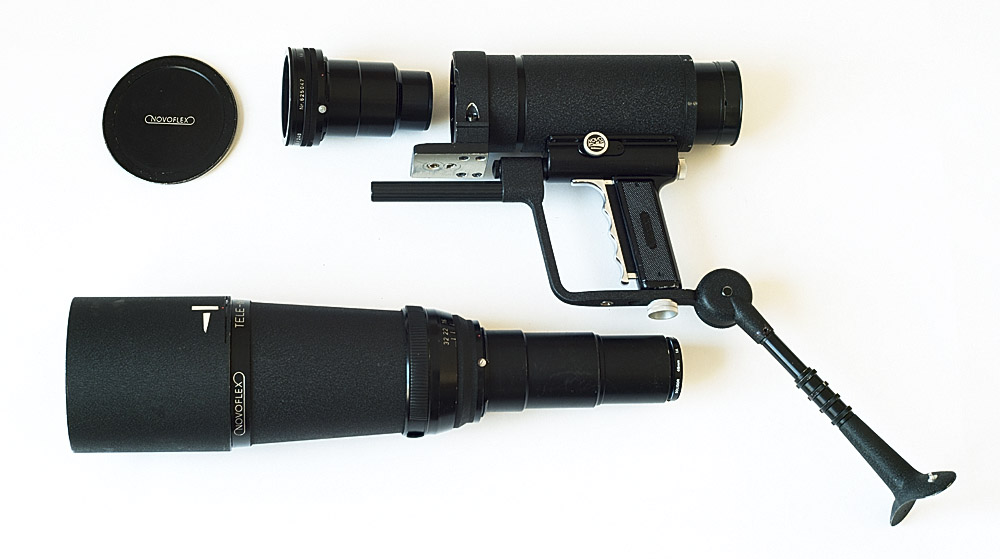
In this picture, the grip - together with the rifle stock - is on the right,
while the 240mm Noflexar and the 500mm Tele-Noflexar “lens heads” are on the left.
The lens cap shown is for the 500mm Tele-Noflexar.
[griphead.jpg]
Lens Data Summary
Introduction to the
Novoflex Follow-Focus System
&
Review of the 240mm
Noflexar Lens
The Novoflex system
Novoflex “follow-focus” lenses can be separated into two components, which the manufacturers call:

The lens head has the full optical section in its barrel, together with the aperture and aperture control ring, the lens hood (if provided) and the lens cap. The front element of the 240mm Noflexar is so deeply recessed within the mount that no lens hood or further shade is required to shield the front of this lens from sunlight or other sources of light.
The pistol grip provides the focussing mechanism and has on the back the appropriate camera mount. The grip with the Pentacon Six mount has the manufacturer’s code name “TISPIGRIFF”.
Changing the lens heads
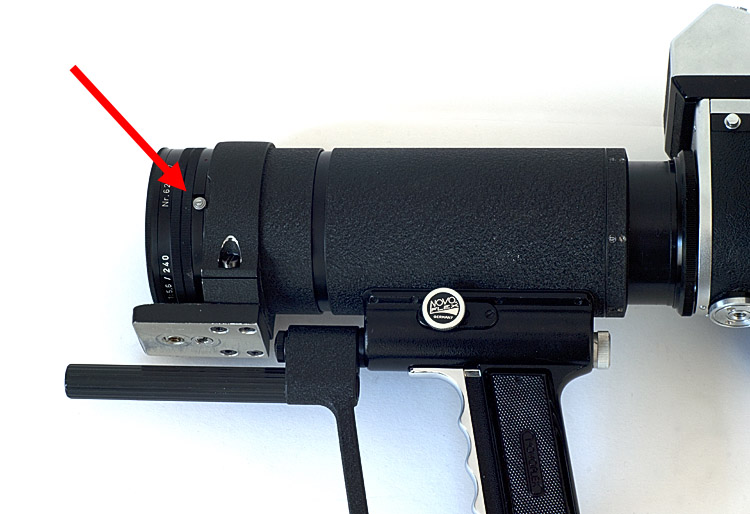
The lens head is released from the pistol grip
by pushing the little button arrowed in this picture towards
the front of the lens
and then rotating the lens head anti-clockwise
about 1/6 of a turn to remove it from the bayonet mount inside
the pistol grip.
[11122216.jpg]
If swapping the two lens heads, it will be
necessary to re-focus, even if the lens pistol grip has been
locked onto infinity or some other setting with the previous
lens.
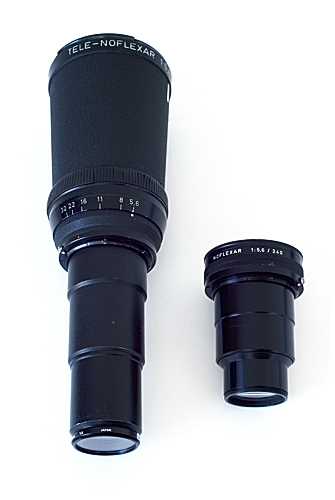 [11122213.jpg] |
When one removes the lens head from the
pistol grip for the first time, one may have a
surprise. On the rear end of each lens head there
is a male filter thread that will accept a 49mm
filter. In the photograph on the left there is a
UV filter mounted on the back of the 500mm
Tele-Noflexar. No filter is necessary for the
correct optical operation of either lens.
For 35mm cameras at least three different lenses were available (280mm, 400mm and 640mm) but for 2¼ square cameras there were originally just two lens heads: 240 mm and 500mm. Both lenses have a maximum aperture of f/5.6. (For information on a 400mm Noflexar for other medium format cameras, see here.) A much wider range of lenses from Novoflex and Schneider was available for use with the Novoflex bellows:
|
Aperture control
This is manual aperture lens: there is no auto diaphragm stop-down operation, nor even a “pre-set” lock, as is normal with lenses from Meyer-Optik and some other manufacturers; there are détentes at each full stop position, so you just count the clicks to stop down:
Focus is achieved by squeezing the trigger in the grip. Focus can if required be then locked in place by turning the round knob that is visible just above the trigger. There is an equivalent knob on the other side of the lens so that the focussing grip can be held in either hand, and focussing can be locked with the other hand. Then you need to stop down and then fire the shutter. With three things to do and only two hands, you can choose which two are critical in the particular shooting situation:
The 240mm Noflexar is larger than some
other 240-300mm lenses, although perhaps the comparison
in the illustration to the right is a little unfair, for
two reasons:
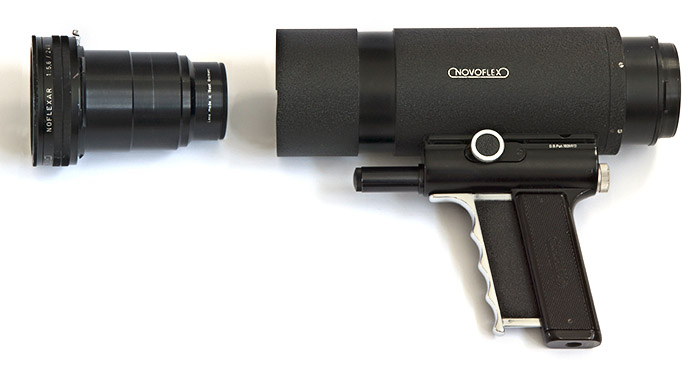 [novo240_2.jpg] This 240mm Noflexar lens and pistol grip display some differences, compared with the one in the image to the right:
It is possible to see the tripod socket that is in the base of the pistol grip. The socket takes a 3/8" tripod bolt, although an adapter to ¼" can of course be fitted, if required. |
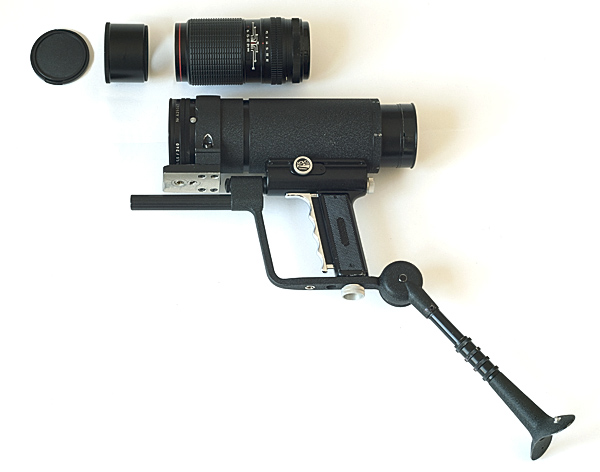 Comparison of 240mm Noflexar with 250mm f/5.6 Telear/Arsat [11122211.jpg] |
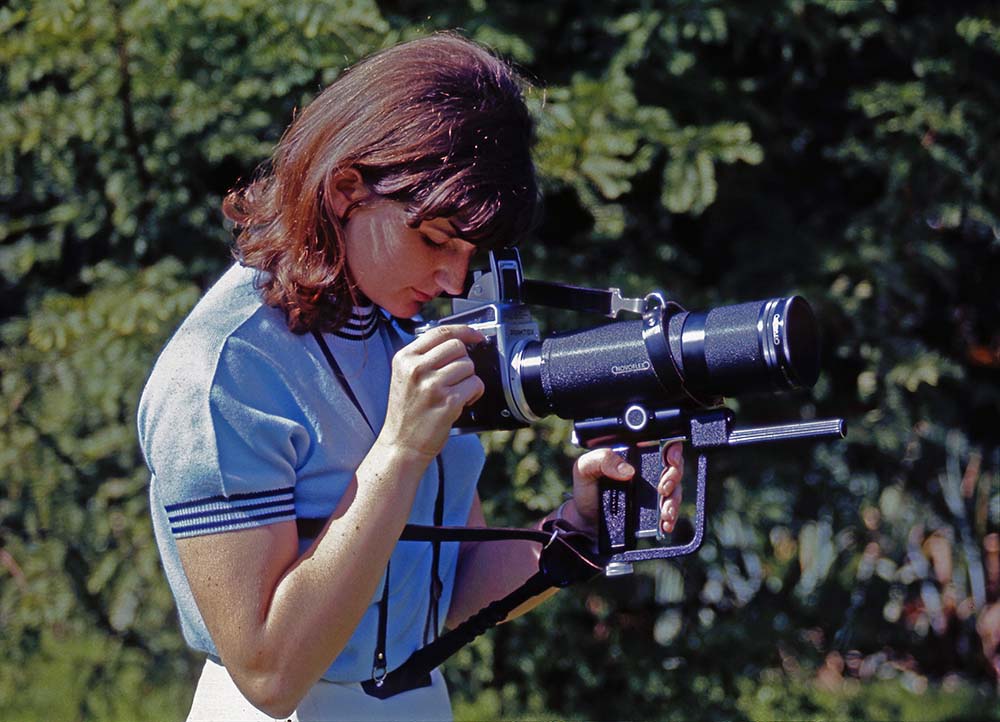
To go on to the next section, the review of the 500mm Tele-Noflexar, click here.
To return to the overview of Novoflex lenses, click here.
To go back to the beginning of the Lens Data section, click below
and then choose the range of lenses that you want to read about.
Back to beginning of the Lens Data section
© TRA January 2012 Latest revision: January 2022